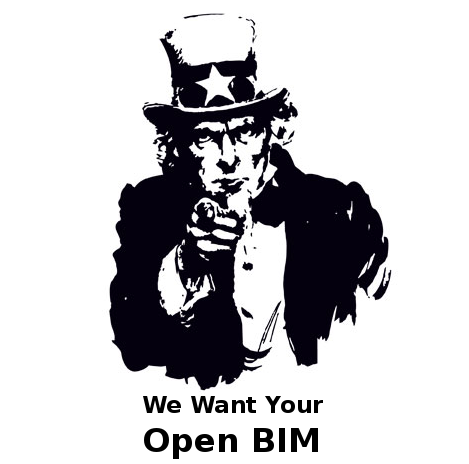In my opinion, I demand the freedom and right to choose whatever BIM software that works best for my work. Tekla, Revit, MicroStation, I really don’t care, as long as it make me competitive at the same time as it makes me able to deliver high quality BIM models.

How to achieve that?
Based on my article at LinkedIn.
Well, interoperability based on open BIM (IFC) workflow, is a key word.
If its important to use one structural model, e.g. Tekla Structures, throughout the value chain, I think the linking functionality in e.g. Revit is important. I’m pretty sure that correct use of that option, in addition to some development of using IFC in drawings (if you really want to make drawings?), suits me and my clients best.
Today Tekla works best as a BIM tool, in all structural domains such as precast, cast in place concrete and rebars, steel detailing and wood construction. And we do most of the design, in some cases all design, including shop drawings, all done in Tekla. I can’t see any reason for us switching to e.g. Revit, to suit a «theoretical» need for all-in-one-application solution. We don’t want other disciplines, e.g. architects, to mess with our BIM objects, for that reason a dead IFC link, from Tekla into Revit, also suits us (and the architects) very well. That may of course change in future.
As a structural engineer, following the BIM from the very beginning to the end as FM model, I also can’t see any challenge developing a preliminary BIM, then exchanging the native model to the contractor for further development. At the same time demanding IFC exports as collaboration models during the development process. And, in the end, claiming as built models containing what ever information needed for later development, as native models. That seems to work perfectly.
We have, based on approx. 80 years experience and statistics, also proved that it is possible to do e.g. reinforcement models and drawings faster in BIM, compared to traditional 2D CAD drawings. And at the same time been able to eliminate nearly all errors. At the same time we are sure we do this faster in Tekla compared to Revit. And we see the same trends in other areas, as prefabrication and steel structures. And do not feel a need for change of BIM tools.
As I see it, the largest obstacle is lack of knowledge and understanding of how such processes works at client side, and the clients lack of ROI from such processes. We need to have competition between software vendors and project designers, to make sure that the client get some (or all) of the ROI. The client often enter the arena as the one with most lack of knowledge, and that needs to change.
I believe a workflow based on open BIM is the easiest way to achieve better knowledge in all parts of the value chain. And change of workflow for native models, in terms of how we collaborate and exchange models, as the easiest way to get some ROI out of this. Working towards better ways to collaborate, across different applications, is needed.
Next step, and the most valued functionality, is IFC4 and round trip. Having the potential to make a client independent of native software knowledge and vendor locks, at the same time as it frees the development of original programs.
A huge ROI, that nearly no one is focusing on today, but will force its way in near future.
Answer is;
Yes we do need open BIM to speed up interoperability and to get some ROI!

